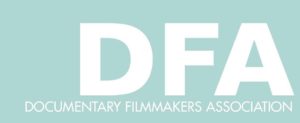 Click here for the full submission (PDF)
Click here for the full submission (PDF)
Excerpt: Filmmakers support the added detail that the 2017 bill gives to what is currently a “fair dealing” exception, now proposed to be called “fair use.”
Much that is in the proposed fair use standard is useful to filmmakers. We are particularly supportive of the Bill’s proposed clarifications that uses can be made for the purpose of “illustration” – an important and frequent use in documentary film.
We note that the 2017 Bill fails to precede the list of authorized purposes by the words “such as”, as does the US and other fair use countries. Thus, the clause would only be applicable to the listed purposes. We take no position on this aspect of the clause.
Assuming that a closed list is retained, we propose two additional purposes to add to the list that are permitted under US law and that would be helpful to many South African filmmakers. Specifically, the bill should protect otherwise fair uses of works for:
- transformative uses of works, such that the new work serves a different audience with a different purpose as the original, such as a “mash up” video;
- non-expressive uses of works, i.e. technological uses that merely “read” or use a work in a way that does not express it to the public, such as uses through data mining, search, storage, machine-reading, and transmission.
Protection of transformative uses is needed to ensure that filmmakers do not have to receive permission to create new art that in no way competes in the same market as the original. Examples include the kind of mash up videos that are sometimes created through user generated content but can as well occur in the creation of non-fiction and fiction films. The standard proposed above is similar to that endorsed by the US Supreme Court – which finds uses fair where the new work “adds something new, with a further purpose or different character, altering the first with new expression, meaning, or message” (Campbell v. Acuff-Rose Music, p. 579).
Protection of non-expressive uses is needed by filmmakers to enable them to use technologies in the digital age that make our films possible. This is the standard in the US that has led courts to uphold technological uses needed for transmission, internet search and other common uses today.




